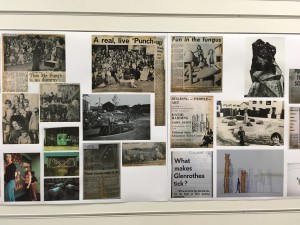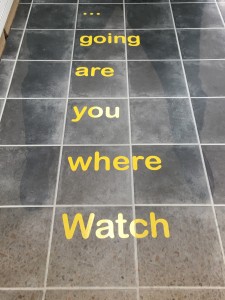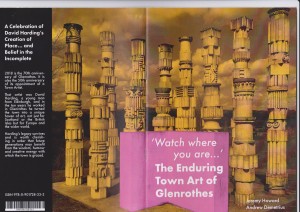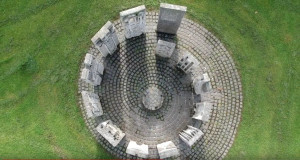 Introduction
Introduction
Out of the blue, in early 2018, I received an email from Jeremy Howard regarding thoughts and plans he and a few others had of marking the 50thanniversary of my going to work in Glenrothes which also marked the 70thanniversary of the founding of the town. Jeremy and his colleague Andrew Demetrius worked at St. Andrew’s University. It was obvious from our conversations that they had already done a huge amount of research on my work, and the works of colleagues, in Glenrothes. Along with the film-makers, Carolyn Scott and Andy Simm, they were well-advanced in their plans to mount an exhibition later in the year in the town centre of Glenrothes and produce an accompanying film.
These people were all strangers to me and so I was overwhelmed by their efforts and commitment to making all of this happen.
The exhibition, which Andrew and Jeremy put together, took place in October 2018. It was a ‘pop-up’ exhibition in a vacant shop, but this description belies what was an imaginative, beautifully conceived and presented show and catalogue. The latter contains a long, thought-provoking essay. Also presented within the exhibition was the film made by Carolyn and Andy of an interview with me including visits to a number of the works in the town.
By all accounts the exhibition achieved much of what it set out to do along with good attendance numbers and, more importantly, numerous conversations with townsfolk describing their engagements with the works.
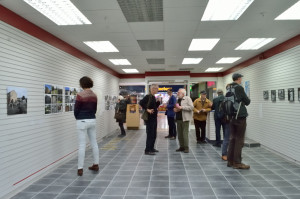
Preface to catalogue essay
WATCH WHERE YOU ARE…: The Enduring Town Art of Glenrothes
A Celebration of David Harding’s Creation of Place… and Belief in the Incomplete
2018 is the 70thanniversary of Glenrothes. It is also the 50thanniversary of its appointment of a Town Artist.
That artist was David Harding, a young man from Edinburgh, and in the ten years he worked in Glenrothes he turned the town into a unique haven of art, not just for Scotland or the British Isles but for Europe and the wider world.
Harding’s legacy survives and is worth cherishing in order that future generations may benefit from the wisdom, humour and creative energy with which the town is graced.
On 19 May 2018, a debate took place in the Rothes Halls as part of ReimagiNation festival, which took its title – Glenrothes – A New Day?– from a 1959 public information film, made when the town was barely a decade old. This event followed the similar meetings of previous years in Glenrothes’ larger new town cousins, East Kilbride and Cumbernauld, in which a small panel discussed the past, present and future of the town, and how the spirit of local people and place manifest themselves.
Following the expert opinions, the discussion in the Rothes Halls was opened to the floor, where almost unprompted, the main topic that emerged was the town’s public art and the residents’ overwhelmingly positive feelings for the hippos, mushrooms, poetry and vast range of other sculptural artefacts dispersed throughout the town.
How did this come to be? How did these artworks come to represent the genius lociof the town? Credit must be given to the Glenrothes Development Corporation’s Chief Architect and Planning Officer, Merlyn Williams, and his deputy and successor John Coghill, who together created a position for an artist to work with the architects and other professions in creating the new town environment within the Department of Architecture and Planning.
In May 1968 an advertisement was placed in The Scotsman for an artist or industrial designer, offering a permanent contract, pension, and housing accommodation in return for which the artist would provide “artistic treatment”[i]of the built environment and aid their “determination to build a cultural presence into the architectural evolution of the town.”[ii]
David Harding (b.1937, Leith) has said that the job description was tailor made for him. Previously, he had taught in Scottish schools and worked at a teacher training college in Africa. On returning to Scotland he had received a few commissions but was keen to find a more substantial project to exercise himself and support his young family, and following a successful interview he was offered the post and moved with his wife and children from Edinburgh to Glenrothes.
[i]Glenrothes Development Corporation advertisement, The Scotsman, 3 May 1968
[ii]View From Glenrothes, exhibition catalogue, p.2. Glasgow, Third Eye Centre. 1977
